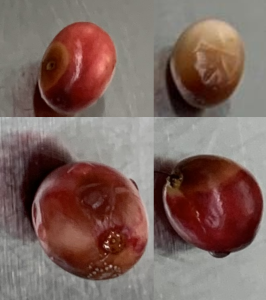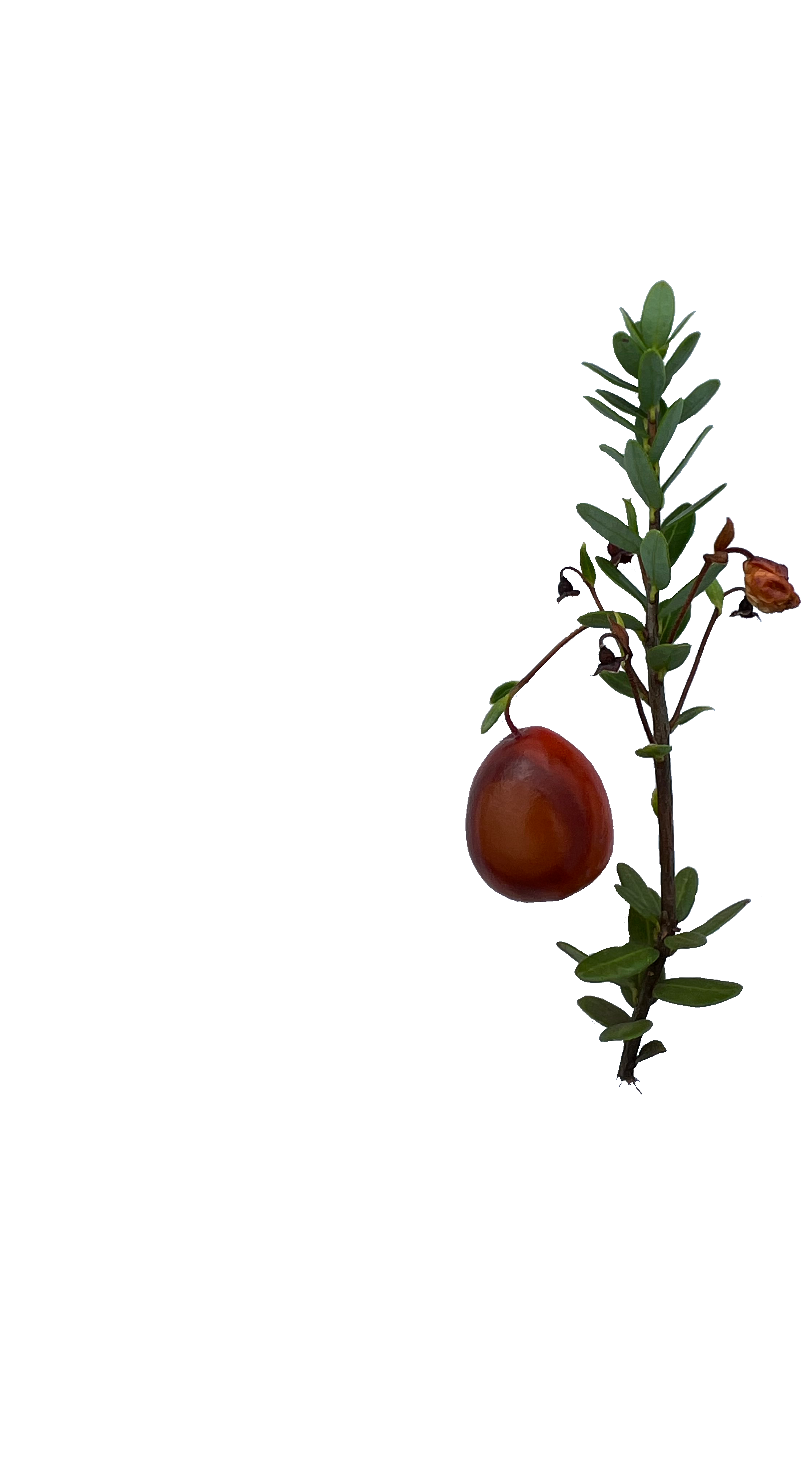Oregon and Washington are the fourth- and fifth-highest cranberry producing states, producing around 500,000 and 150,000 barrels per year, respectively. About a third of Washington’s production is dry-harvest, which is unique as less than 5% of cranberry production nationally is dry-harvest. Harvest mechanisms and management throughout the year are both important in controlling cranberry fruit rot pathogens. Nationwide, over 15 fungal species have been identified as part of the cranberry fruit rot complex.
As important as the management of the cranberry fruit rot complex is, there has been little published research on the complex within Oregon and Washington. As far as we are aware, the most recent published survey from these states was from 1993, and only looked at Washington beds, while the most complete report of rots in both states was published nearly a century ago. Recently, our lab completed a four-year survey of cranberry fruit rots in mature ‘Stevens’ beds in Oregon and Washington.
Main findings
Over four years, we isolated nearly all major reported fruit rots, excluding Monilinia oxycocci (“cottonball”) and Phyllosticta vaccinii (“early rot”). Historically, “cottonball” was one of the major field rots in Oregon and Washington cranberry fields, and we suspect cultivar differences, modern fungicides, and flood-harvest are potential contributors to its downfall as a main field rot. Nearly every other cranberry fruit rot, however, was isolated from each field over the course of the study, suggesting that despite variability year-to-year, it is likely that most mature fields in these states experience disease pressure from every group of the cranberry fruit rot complex (of course excluding “cottonball” and “early rot”).
The moderate climate on the Pacific coast—the growing area for virtually all of Oregon and Washington cranberry production—is likely to contribute to distinct trends seen in this study. The height of summer sees little precipitation with average monthly highs that rarely reach 70° F. Overall rot levels tend to be lower than east coast production, though high rot years are not unheard of—with 2021 being one of those years. The moderate climate likely affects the composition of fruit rot expression as well. We found Colletotrichum acutatum species to be much more prevalent than C. gloeosporioides—the former maintaining a lower optimum growth temperature than the latter, though both cause “bitter rot”. And a new, previously undescribed cranberry rot was found to be a potentially significant player in the cranberry fruit rot complex.

Characterizing a novel cranberry fruit rot: Neofabraea actinidiae
One particular cranberry fruit rot fungus may be a regionally-important pathogen: Neofabraea actinidiae. Various Neofabraea species cause storage rots in kiwifruit, apples, and pears, but have not previously been reported to cause cranberry fruit rot, though Neofabraea actinidiae has previously been isolated from woody cranberry tissue. The Neofabraea actinidiae rot symptoms on cranberry are similar to “bulls-eye rot” found on apples and pears—an infection point and a discolored and outward radiating lesion, akin to a circular archery target. We have observed this cranberry rot in some Oregon and Washington beds at harvest, and more frequently as a storage rot in all beds studied.
Digging deeper
We are continuing to identify and characterize fungal isolates that have not previously been reported to infect cranberries, but which belong to various genera of known cranberry fruit rots, including Coleophoma, Diaporthe, and Colletotrichum. These different species may have important variations in pathogenicity, fungicide tolerance, and infection sources, the knowledge of which could contribute to better management practices. Awareness of additional pathogenic species within the cranberry fruit rot complex may aid efforts of the SAME project to adapt molecular (multiplex PCR) assays to rapidly detect and quantify cranberry fruit rot pathogens in plant tissues and cranberries.
Future Work
This has been important and foundational research going into the SAME multi-state project, where we are following these fruit rot fungi from bloom through harvest, to determine when they are infecting berries. One of the many strengths of the SAME project is that the cranberry fruit rot complex is being studied simultaneously in all five major cranberry producing states over several growing seasons—a first. This will allow the SAME team to compare and contrast regional differences in the cranberry fruit rot complex. This may reveal management practices that significantly reduce the incidence of cranberry fruit rots.
Article by Don Valentine and Dr. Virginia Stockwell, USDA/Oregon State University
